Rebels in Ruins: Keeping up with major leagues not easy for UNLV
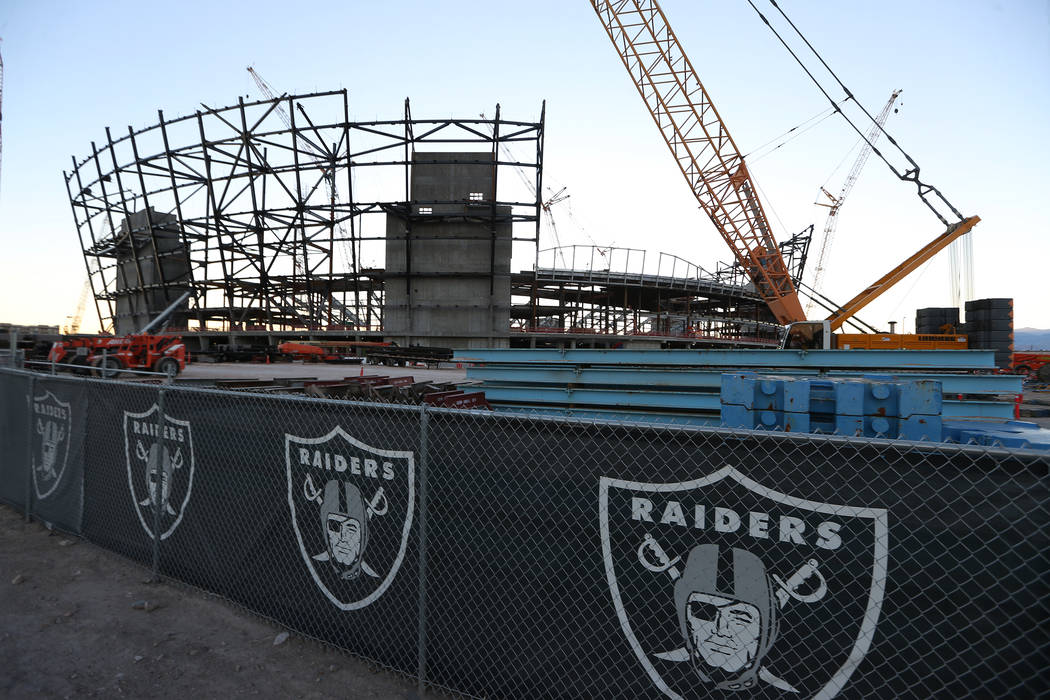
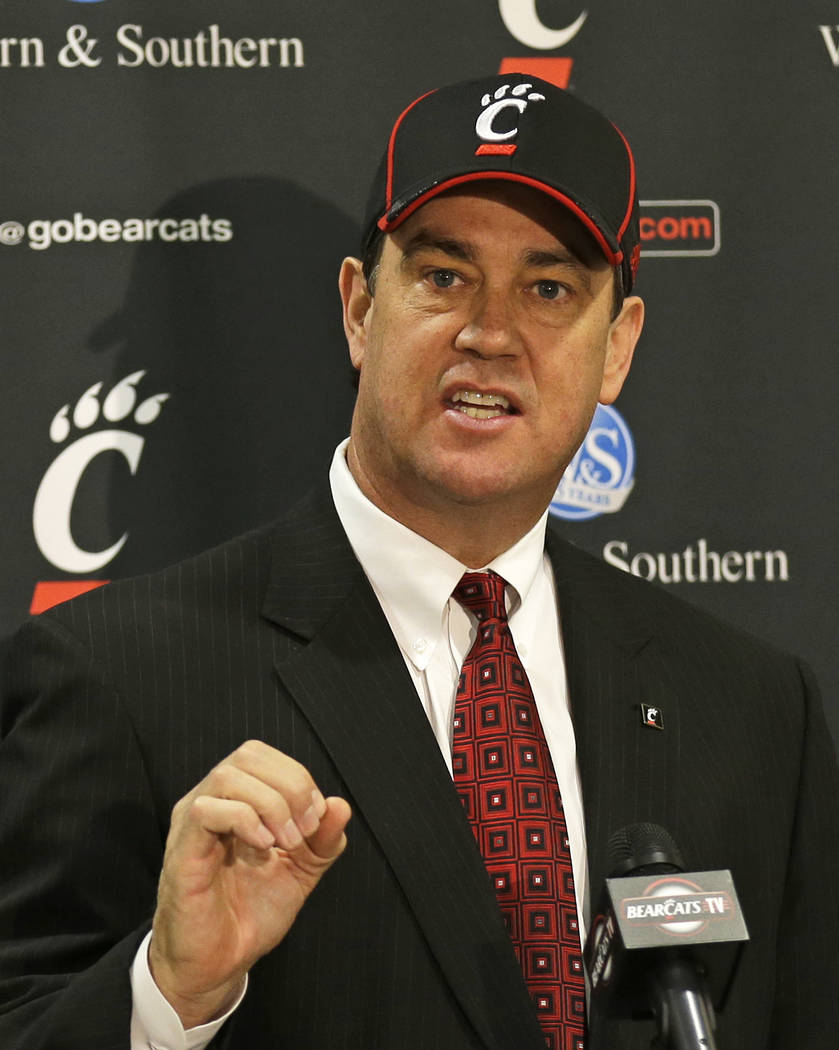

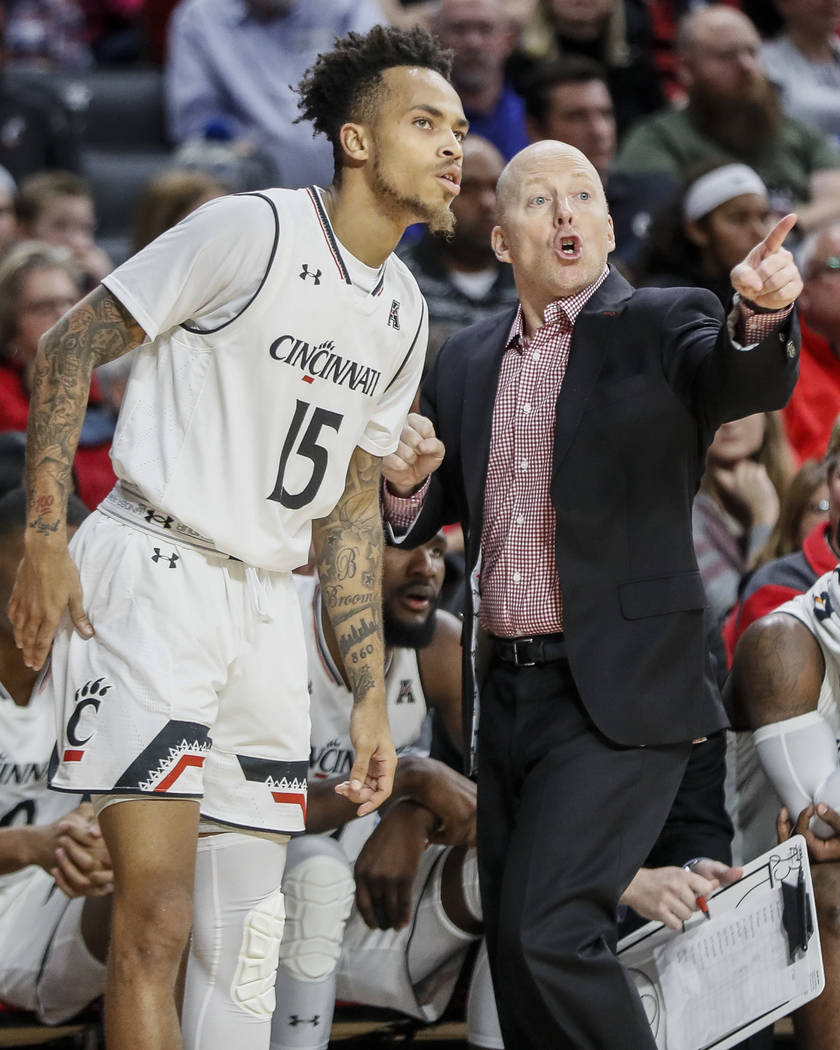
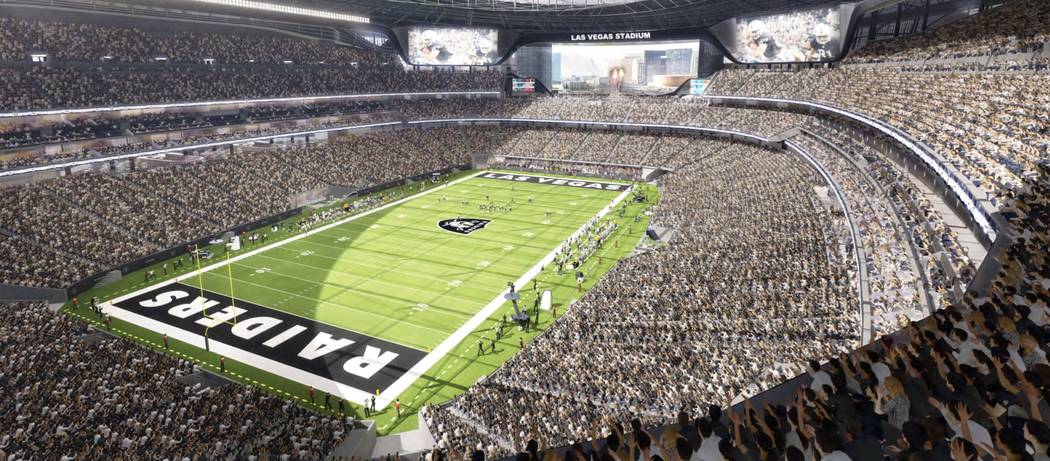
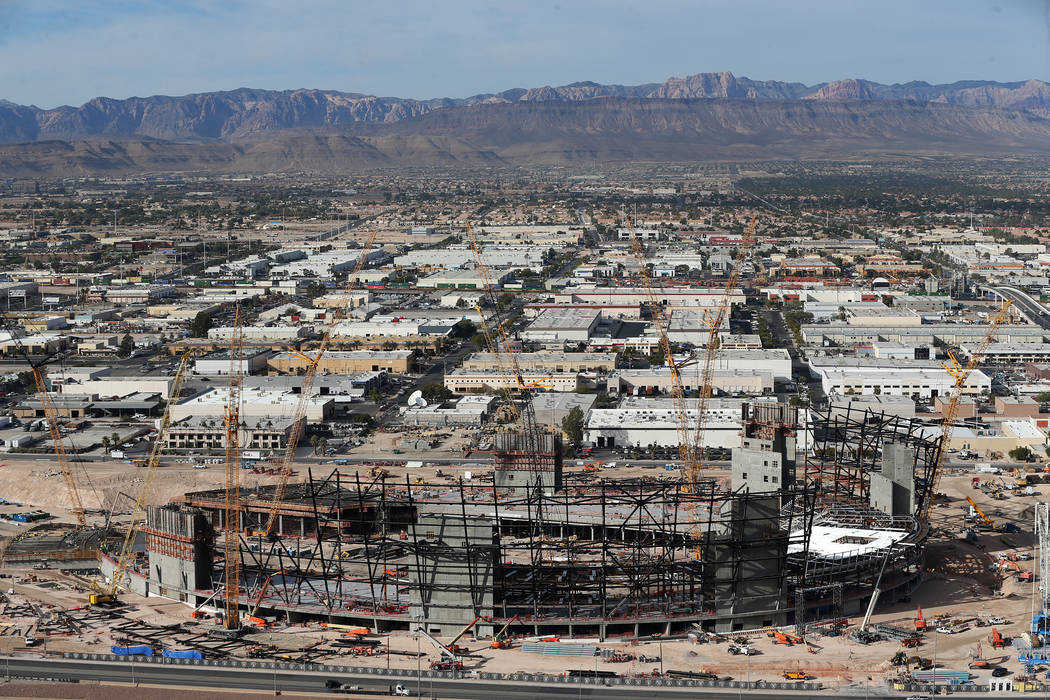
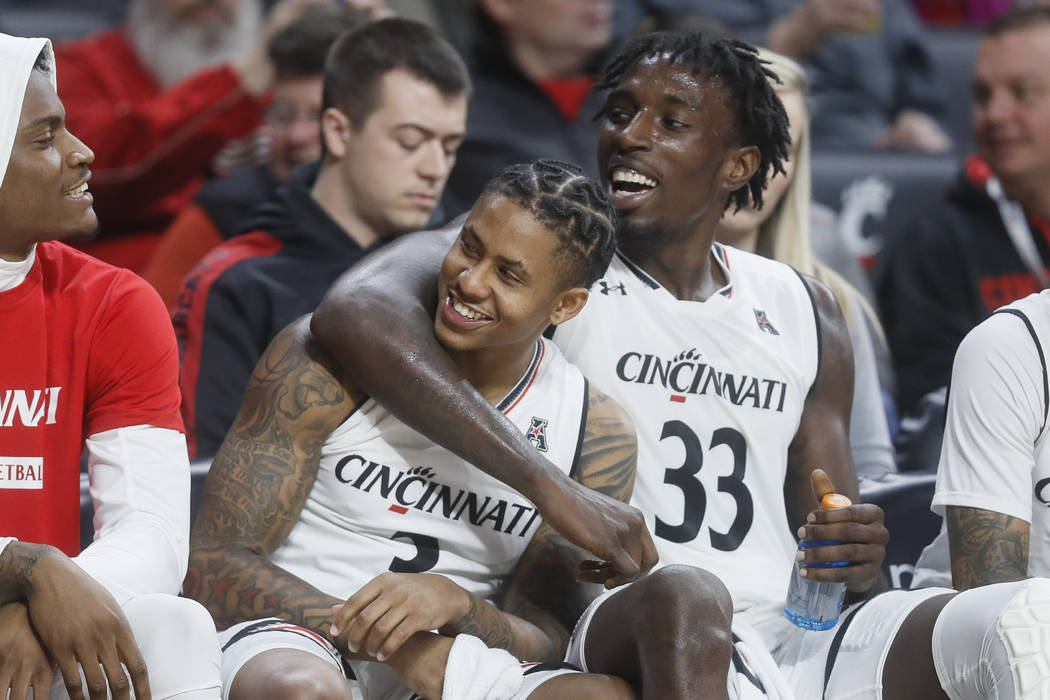
Mike Bohn, the effervescent athletic director at the University of Cincinnati, was reminiscing about having held the same position at San Diego State when a memory struck him like a bolt of lightning.
“Every time the Chargers were playing a big game, we put on our blue and gold and worked the media room and supported the heck out of them,” he said about having to share a football stadium with an NFL landlord. “We built a relationship to where we said: ‘Do you think we at least might get an Aztec helmet painted on the 50-yard line instead of always a Charger one?’
“You might laugh, but that’s a big deal to our recruiting, our student-athletes — ‘Why are we looking at blue and gold all the time?’ ”
In 2020, when UNLV starts playing football games at the new Las Vegas Stadium being built for the Oakland Raiders, it’ll be silver and black. There’s a 63-page document of do’s and don’ts. Article 16.1 says the Rebels will be allowed to brand midfield and the end zones.
One small step of coexisting in the same backyard as major league teams taken. Many giant leaps yet to be conquered.
The last of a five-part series by the Review-Journal looking at the struggles of UNLV athletics examines the considerable challenge of competing with major league teams in a rapidly changing Las Vegas sports landscape.
Pros and cons
With the NHL already entrenched here, the NFL on its way and perhaps the NBA after that, UNLV’s quest to remain relevant in its hometown is just beginning, according to athletic directors at other NCAA Group of Five schools in major league markets.
“In Cincinnati, we’ve got the Reds, who are kings, and the Bengals,” Bohn said. “And to compound that, we were the partner who helped create FC Cincinnati — they’re playing in our stadium — and they’re in MLS starting next year.
“It was similar when I was athletic director at Colorado because the Broncos in Denver are such a big gorilla. How do you assure you stay relevant? When the Broncos are winning the Super Bowl, you’re lucky if you can get your score on the nightly news.”
Like UNLV, Cincinnati is steeped in basketball tradition that dates to its Oscar Robertson-led and NCAA championship teams of the 1960s. But Bohn quickly transitioned to a recurring theme: how it’s difficult to make financial ends meet these days without a winning football program, regardless of any synergy and goodwill created with one’s major league neighbors.
With coaches such as Mark Dantonio, Brian Kelly and Butch Jones having raised the profile of the Bearcats’ football program, it has turned into a revenue producer.
“I know of your rich basketball history — we’ll be playing basketball out there this year ourselves,” Bohn said of a Dec. 1 game against the Rebels. “But football has got to be successful. You start looking at the TV rights, Mountain West, American, Pac-12 you name it. It’s driven by football.”
Football fanatics
Chris Pezman, Bohn’s counterpart at American Conference rival Houston, agrees that it is difficult for a Group of Five program to balance the budget without a successful football team, even without having to compete with major league sports for fans and sponsors.
“Football is where the bulk of the revenue comes from — football drives the bus,” Pezman said. “We’ve had plain speak with our coaching staff. They understand the economic importance (of football). When we went to the Peach Bowl, it helped everybody. And when you don’t, and you don’t have a winning season, it causes everybody to tighten their belts.”
The Cougars’ recent success under coaches Art Briles, Kevin Sumlin and Tom Herman has reinvigorated the program and led to Houston building a 40,000-seat on-campus stadium that opened in 2014.
The football stadium and the opening of renovated 8,500-seat (Tilman) Fertitta Center, formerly known as Hofheinz Pavilion, in December will allow the Houston athletic department to become concert and special events promoters — much as UNLV was with the Thomas & Mack Center and Sam Boyd Stadium when those facilities were the primary ones in town.
Pezman said the extra revenue is expected to increase the Cougars’ athletic budget to around $60 million — not exactly a Power 5 ledger, but getting closer.
Like Bohn, he said keeping up with the major league Joneses is a never-ending battle.
Roll out the barrel
“You’ve got these billion-dollar entities — the Texans, the Rockets, the Astros winning the World Series two years ago — that dominate the market,” Pezman said. “You’ve got to figure out how do you take limited resources and penetrate the market.
“Previously when we’ve hired marketing people, we’ve hired somebody from another college, so we took a different approach. We hired two people from the city of Houston who had significant contacts within the market. We were able to leverage those relationships as we try to stretch that dollar and gain footing in the media place.”
But should all else fail, there’s always cheap beer.
“We can be more like minor league baseball where you have dollar beer night and those things,” Pezman said. “No, we’re not doing dollar beer night, but we’ll be doing $2.50 beers in our student section” along with offering $10 tickets to the general public.
“These are things where we can be different,” Pezman said. “What is it that we can do that the more established corporate professional leagues cannot do? We are working in the margins to gain viewership, attendance, all those things.”
Bohn said engaging the student body also is a priority at Cincinnati, along with scheduling marquee football opponents that pique the interest of casual fans.
“Playing games of stature, that’s where we’ve worked really hard,” he said of home and home football series against Nebraska, UCLA, Pitt and Boston College.
“We’re gonna go play Notre Dame. We’re playing games of relevance. Now I’m not saying we’re winning them all, but we’ve had Miami of Florida in here on a Thursday night, and ESPN was here, and it was packed.”
UNLV, on the other hand, played UTEP and Prairie View at home this season. ESPN wasn’t there, and it wasn’t packed.
Big-game hunting
“You’ve got to play games of relevance whether your team is good or not,” Bohn said of college teams trying to carve niches in major league markets. “You had Wisconsin out there. That was a big deal, right? What did you have, 40,000?”
The Rebels have hosted Wisconsin five times at Sam Boyd Stadium, attracting crowds of 32,207, 40,091, 42,075, 38,250 and 31,107. These were all games of relevance, to use Mike Bohn’s term.
Playing at the Raiders’ new stadium combined with the allure of Las Vegas may provide UNLV with more Power Five scheduling opportunities. But with its football program stuck in reverse and its once-vaunted basketball team no longer attracting big crowds in what fast is evolving into a major league sports town, this probably isn’t the best time to be a Rebels athletic director.
“We experienced the unifying power of the Golden Knights last year, but it all started with the Runnin’ Rebels, and we made magic here in the ’80s and ’90s,” Rebels athletic director Desiree Reed-Francois said. “That magic’s been buried a little bit, but we’ve seen glimpses of it, and we have a great opportunity to rebuild for a rebirth.”
The big fight continues. Others aren’t as optimistic about UNLV being positioned to ward off the major league sports haymaker in the ring it once dominated.
Dr. Brad Rothermel, the man in charge of the athletic department during the Rebels’ distant heyday, did not hesitate when asked what he would do if faced with the myriad challenges confronting his latest successor.
“Retire,” he said.

More Rebels: Follow at reviewjournal.com/Rebels and @RJ_Sports on Twitter.
Ron Kantowski at rkantowski@reviewjournal.com or 702-383-0352. Follow @ronkantowski on Twitter.
Regents’ report
The UNLV Athletic Department recently released its annual report to the Nevada System of Higher Education Board of Regents.
It stated that UNLV athletics “balanced a total budget of $39 million with a surplus of over $500,000” and that adjustments were made to the 2018 budget “to provide more realistic revenue and expense projections to project and identify central funding that would be needed to balance the athletic department’s budget.”
According to the report, “UNLV athletics will employ revenue generating strategies to keep pace with increased spending challenges through strategic fundraising initiatives in major gifts and annual philanthropy, implement new ticket sales strategies to increase ticket sales, enhanced game day fan engagement and activities, persistently evaluate and schedule strategic football and basketball games, and strategically plan for ways to maximize revenue opportunities due to move to Las Vegas Stadium in 2020.”













